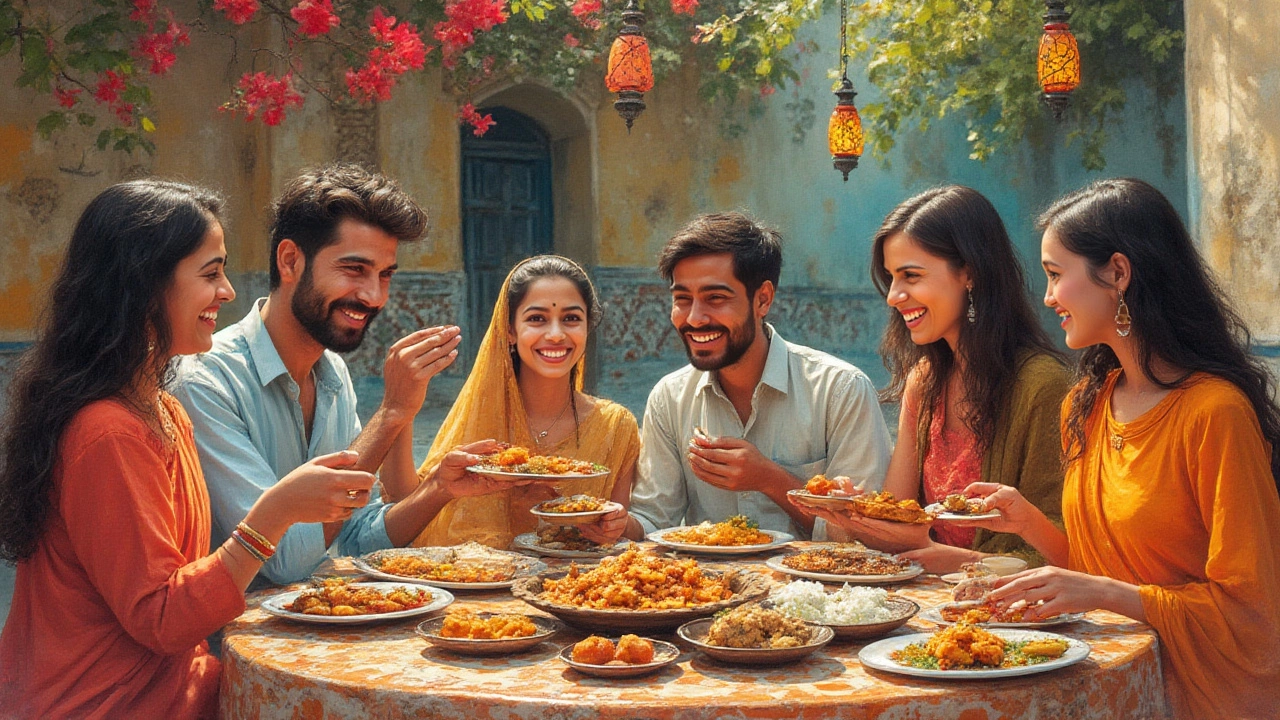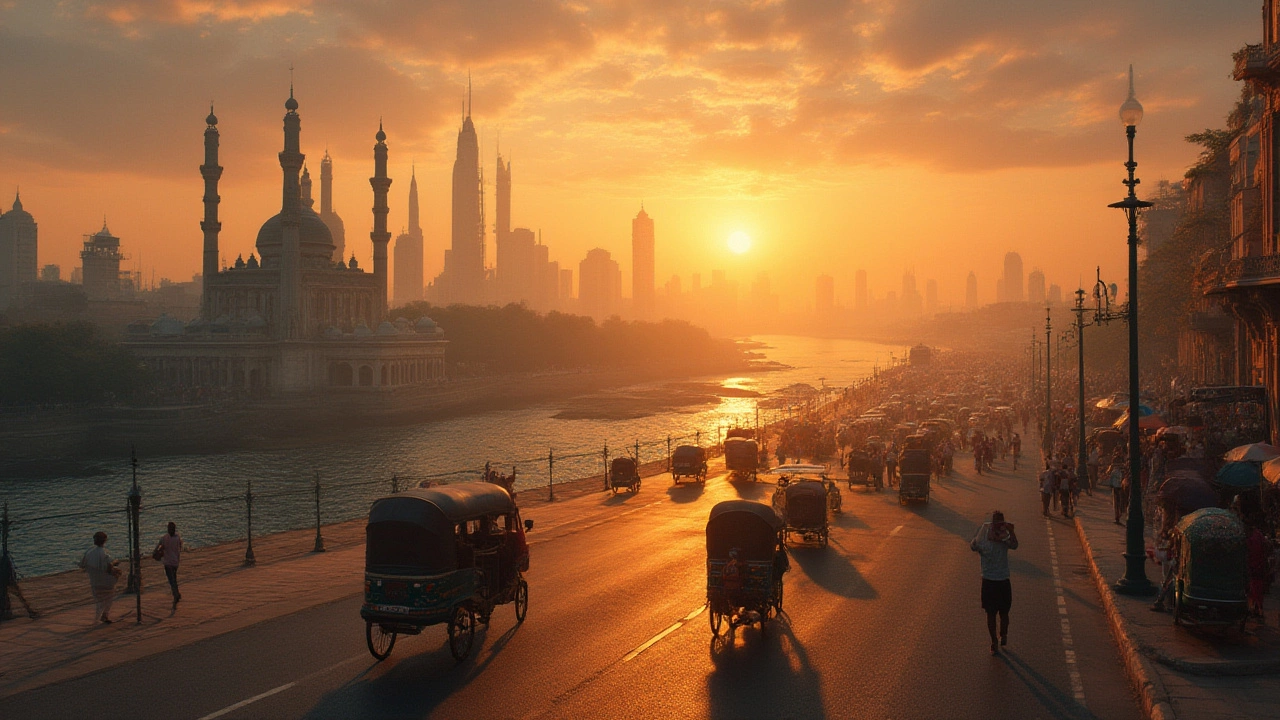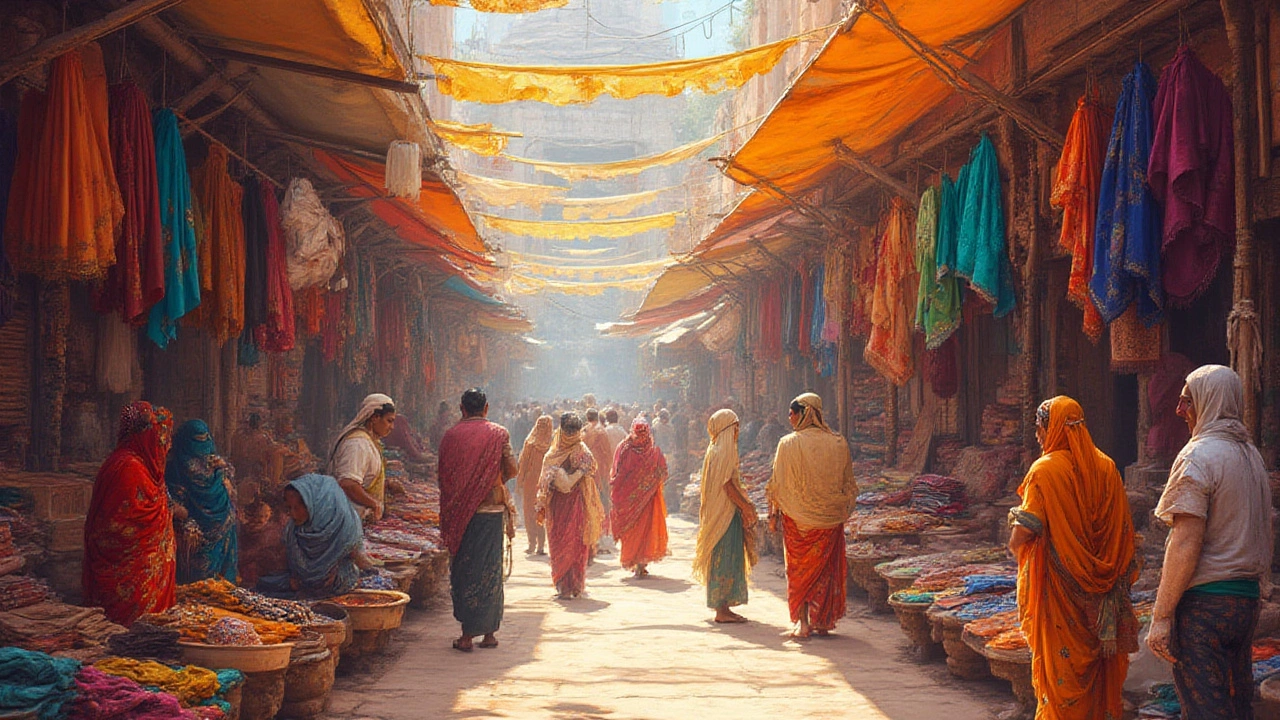Ask anyone who's wandered the busy lanes of Ahmedabad, and they're bound to have a story. Some remember a spicy whiff of street food in Manek Chowk at midnight, others can’t shake off the vibrant textiles of Law Garden market or the crisp white walls of Sabarmati Ashram. Ahmedabad doesn’t care for subtlety; it’s a city that grabs you from the moment you step off the plane. This place has taught India how to mix the old with the new—how to hold onto heritage while building a thriving metropolis. And nothing about Ahmedabad is by accident—its fame didn’t just pop up overnight. It’s a product of centuries of grit, innovation, and serious pride in its way of life.
The Soul of Ahmedabad: Heritage, History, and Heart
Let’s start with the basics. Ahmedabad is the largest city in Gujarat, founded over 600 years ago by Sultan Ahmed Shah. Walk the streets of old Ahmedabad and you’re walking through UNESCO World Heritage—literally. In 2017, it became India’s first city to land on that prestigious list, and it isn’t just for show. The city’s old quarters pack in intricate havelis with carved wooden facades, centuries-old mosques, and winding pols (traditional neighborhoods) where neighborly gossip is an art form. The Jama Masjid, built in 1424, stands with its yellow sandstone grandeur as a peaceful escape in a bustling city. If you’re into architecture, the city’s Indo-Islamic blend is a treat; check out Sidi Saiyyed Mosque for its famous ‘Tree of Life’ stone lattice window—a spot every local schoolkid visits at least once.
Of course, Ahmedabad doesn’t freeze in the past. Stroll along the Riverfront and notice the design: wide walkways, lush parks, trendy cafes—it’s a masterclass in bringing the Sabarmati back to life. The Sabarmati Ashram, home to Mahatma Gandhi for over a decade, brims with a different sort of energy. People come here to trace the Salt March route, picture Gandhi spinning khadi, and read letters in his own handwriting. These are the things that root Ahmedabad in a deep sense of history and give it the kind of cultural street cred most cities would kill for.
Want a tip for really soaking up old Ahmedabad? Book a heritage walk at sunrise. Guides here don’t just rattle off dates—they’ll tell you about local legends, hidden courtyards, and the daily drama between stray dogs and the early morning doodhwalas (milk vendors). Bring good walking shoes; these stories are better experienced on foot.

The Threads That Bind: Textiles, Shopping, and the Bazaar Buzz
Ever wondered why half of India’s textiles say ‘Made in Ahmedabad’? This city is a textile giant—a fact that’s not just about history, but daily life. It was once called “the Manchester of the East” because of its huge cotton mills in the 19th and 20th centuries. Today, the fabric game is alive in the form of endless sari stores, handloom emporiums, and the riotous, color-packed stalls at Law Garden Night Market. Gujarat’s bandhani (tie-dye) and patola silk designs are crowd-pleasers, and tourists walk away with armfuls of dupattas, chaniya cholis, and ethnic jewelry. Dive into Dhalgarwad for old-school deals and be prepared to bargain hard—no one pays the sticker price here if they can help it.
Ahmedabad’s textile tradition isn’t just about commerce, it’s about culture. Textile stalwarts like NID (National Institute of Design) and Calico Museum of Textiles make this a city where design meets heritage. The Calico Museum, especially, is mind-blowing if you’ve got even a pinch of curiosity for fabrics—it holds rare Mughal carpets, Kashmiri shawls, and ceremonial costumes, all with slice-of-history stories attached to them. But you have to pre-book a visit, and only a handful of people are let in each day. It’s worth planning ahead.
Shopaholics also get to play safari in the narrow lanes of Rani no Hajiro. Here, it’s all about silver jewelry, vintage brooches, and those embroidered blouses that make Instagram feeds pop. The city’s shopping obsession kicks into high gear during Navratri, Gujarat’s biggest festival, when every shop, bazaar, and sidewalk fills up with festival wear and glittering trinkets. For the bravest souls, night markets like Manek Chowk turn into mad hives of commerce till the wee hours—a midnight food bazaar in the heart of a jewelry market, with families eating local street food on makeshift tables perched on parked scooters.

Flavors and Festivals: Living Ahmedabad Every Day
If you think you know vegetarian food and haven’t eaten in Ahmedabad yet, I hate to break it to you—you don’t. This city has made vegetarian cuisine so exciting that die-hard meat eaters don’t even notice what’s missing. The local food scene is famous for a reason. You could live a week on jalebi-fafda and dhokla alone—those are breakfast staples here. Try the buttery khakhra, tangy Gujarati kadhi, hot samosas, and street-side pav bhaji, then wash it down with a tall glass of sugarcane juice or buttermilk. For foodies looking for the real deal, slip into spots like Das Khaman, Asharfi Kulfi, or Swati Snacks. Each has its fans and their signature dish you have to try, or some old-timer will take it as a personal offense.
Ahmedabad also knows how to have fun. Garba season—aka Navratri—is a showstopper. Across the city, thousands dress in a riot of colorful clothes and dance in circles till their feet ache and their smiles hurt. Even if you have two left feet, you’ll be swept into the closest garba circle and taught a few steps by a stranger—don’t say I didn’t warn you. The city’s festival calendar is packed: Uttarayan (kite festival) turns the sky into a shimmering battlefield every January, and Diwali lights up streets so bright it looks like the whole city’s in on a giant inside joke. Each event brings with it special sweets—like undhiyu and chikki for winter—and a thrum of drums and music that lingers long after the last cracker’s gone off.
There’s more than just food and fanfare, though. Ahmedabad is in India’s top five fastest-growing cities, balancing its love for tradition with startup energy and a tech-savvy young crowd. You’ll spot old men playing cards beside glossy malls, rickshaw drivers quoting Shakespeare (“to dhokla or not to dhokla?”), and college kids filming reels in front of centuries-old gates. Quirky cafes, fine dining at rooftop restaurants, and cool art galleries like Kanoria Centre pop up where you least expect them. The nightlife is less about bars and more about late-night tea stands and roadside chats—don’t forget, Gujarat is a dry state, but that only means people get more creative with their plans.
If you’re wondering why Ahmedabad gets so much hype, just remember this: it’s not trying to be Mumbai or Delhi. It’s busy living its own story, grounded in centuries of rich heritage, bustling with energy, and always ready with a plate of piping hot fafda. That’s why this city is famous, and that’s why, the moment you leave, you’ll already be planning a trip back.
